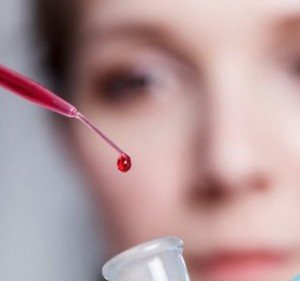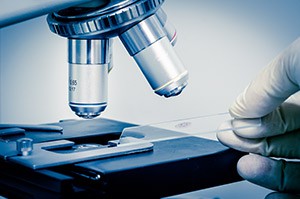Editor's Note: Bill doesn't get sentimental about stocks because, as we've often seen, emotion and investing just don't mix. In fact, Bill has always played this stock pretty close to the vest; until now, he's only shared it with his paid-up subscribers. Still, he's not exactly looking back with the proverbial "rose-colored glasses" when he talks about this recommendation with you. Bill wanted to go (really) big with the story of this "anniversary" because this stock he's talking about could easily double for the eighth time. Here he is...
This was the very first stock we recommended on the very first day Private Briefing was published - Aug. 11, 2011.
On that day, you could've owned it for less than nine bucks a share - $8.60.
That's a distant memory.
We've re-recommended these shares more than a dozen times since then, so successive "classes" of our readers can participate in these gains.
And sure enough, this stock hit an all-time high at midday yesterday... up a whopping 717% from that first day we wrote about it.
Let me tell you the ticker - and why I think there's a lot more profit in store for this "classic" pick...
From Belgium with Love

The company I'm talking about is biotech Galapagos NV (Nasdaq ADR: GLPG). It's got an established history of piling on gains.
Late last April - with Galapagos already up 359% - my research revealed that a form of "uplisting" would ignite another rally.
That's exactly what happened.
Galapagos was trading at $39.49 a share at the time. As of 2 p.m. yesterday, it was trading at $69.48. And believe me, it's still a great deal for the money.
When we first recommended Galapagos, we said it was like you were buying an independent drug-development lab on the cheap. And the fact that the company was collaborating with multiple partners on multiple drug-development programs meant that some of the key risks associated with a small, clinical-stage biotech - either running out of money or the risk that one clinical failure would wipe out the firm - were minimized with Galapagos.
That's how we continue to view this.
What originally attracted us to Galapagos was its anti-inflammation know-how - specifically its core competency in Janus Kinase (JAK) inhibitors, a type of drug that inhibits certain enzymes. JAK inhibitors have therapeutic uses in the treatment of certain cancers and inflammatory diseases - especially rheumatoid arthritis (RA).
Galapagos has an oral JAK1 inhibitor drug called filgotinib - known inside the company as GLPG0634 - that is currently under investigation for the treatment of both rheumatoid arthritis and Crohn's disease. The phase 3 trials (the last set of trials before commercial approval) for filgotinib in RA recently got underway.
The drug is thought to have a lot of promise because it very selectively zeroes in on the JAK1 inhibitor.
Here's why that's important from a medical standpoint - and is so intriguing from an investor's point of view.
[mmpazkzone name="in-story" network="9794" site="307044" id="137008" type="4"]
There are other JAK inhibitor drugs already on the market, including a Pfizer Inc. (NYSE: PFE) drug called tofacitinib. But they are less selective, meaning they inhibit several or all of the JAK inhibitors, which in turn leads to side effects that mean doctors must prescribe dosing limits that cap effectiveness.
For instance, a drug that's supposed to be a JAK1 inhibitor - but whose lack of selectivity also makes it a JAK2 inhibitor - may lead to anemia and a fatigue-inducing/energy-sapping blood disorder known as thrombopenia.
That's the thinking behind the development of newer and more selective inhibitors like filgotinib.
Galapagos isn't alone in understanding the potential for JAK-inhibitor technology - or for the drugs like filgotinib that emanate from it.
Talk About a Power Partnership

Galapagos and Gilead Sciences Inc. (Nasdaq: GILD) are collaborating on that drug - and they believe it has blockbuster potential.
If you know anyone afflicted with rheumatoid arthritis, you know how debilitating the disease can be.
As GBI Research noted, "the burden of RA, a chronic, progressive, and currently incurable autoimmune disease that primarily affects the joints, is considerable."
It affects 4.9 million folks and is a disease that truly (and severely) impairs a sufferer's quality of life. According to one estimate, at least half of RA sufferers end up not being able to work within 10 years of its onset.
Prior to 1998, treatment options were limited to small-molecule, disease-modifying therapies such as methotrexate, sulfasalazine, and antimalarials, GBI says. But a full third of patients don't respond to these "first-line" drugs.
That opened the door to new biologics like Enbrel, Remicade, and Humira.
Even so, there's a bunch of folks who aren't responding to these new treatments, either, meaning there's still what doctors refer to as an "unmet need."
From 2013 through 2020, GBI is forecasting the global market for RA drugs to zoom from $14.3 billion to just over $19 billion.
Gilead licensed rights to filgotinib last year. As part of that deal, Galapagos received an upfront payment of $725 million - including $425 million that gave Gilead a 15% stake in Galapagos.
Deals like that are always a good sign of long-term confidence.
Galapagos and Gilead will split the profits in markets where they are promoting the drug jointly. And Galapagos can grab an additional 20% in royalties from sales in other markets.
Galapagos is working with another Private Briefing winner - AbbVie Inc. (NYSE: ABBV) - on cystic fibrosis (CF) drugs. The two companies are pursuing opportunities in one of the hottest slices of biotech right now - multi-drug therapies.
Companies are partnering up on the premise that the combination of multiple drugs - which are only marginally effective on their own - could be the answer to some of the more dogged diseases humans suffer from.
Here Galapagos and AbbVie are researching drug combinations that could slow (or even halt) the organ damage that shortens the life span of CF sufferers.
This deal calls for Galapagos to receive as much as $600 million in milestone payments - and to receive half the profits in the major markets. Phase 2 data from the drug GLPG 1837 should be seen later this year.
We'll be updating Private Briefing readers with any news or movement on Galapagos, just as I have since my days covering biotech as business journalist with The Baltimore Sun.
Experience has taught me that no investor can afford to turn their back on biotech, not for a second.
The Biotech Sector Has Been Great for Us
Some of our biggest wins have come from biotech - the home of several recommendations that have doubled more than once or twice.
Private Briefing readers' biggest win was the 818% gain from Pharmacyclics Inc. - a blood-cancer-drug pioneer we recommended in the April 2012 special report called "The Biotech Buyout Binge."
In that report, I told subscribers to expect a "binge" of biotech buyouts engineered by cash-rich biopharmaceutical firms desperate to replace blockbusters that were losing patent protection.
We were right about the so-called "patent cliff." According to a recent Towers Watson study, there were 300 merger-and-acquisition (M&A) deals in the biopharma sector alone in the three years that followed that prediction.
Pharmacyclics - one of the three stocks I recommended in that special research report - ended up as the buyout we predicted.
Sure enough, early last year, AbbVie floored investors (well, except for our readers) by announcing it was buying Pharmacyclics for $21 billion - a cash-and-stock deal worth $261.25 a share - a full 818% more than our original recommendation price of $28.47.
These are uncommon gains, to be sure, but biotech shares like Galapagos and Pharmacyclics have a tendency to make our readers some serious money.
The Secrets of the World's Greatest Stock Picker
Bill's track record is astounding, averaging four double- or triple-digit peak gain winners every month for five straight years. The proof is in his proprietary stock-picking method. Just have a look here to learn more...
Follow Bill on Facebook and Twitter.
About the Author
Before he moved into the investment-research business in 2005, William (Bill) Patalon III spent 22 years as an award-winning financial reporter, columnist, and editor. Today he is the Executive Editor and Senior Research Analyst for Money Morning at Money Map Press.



